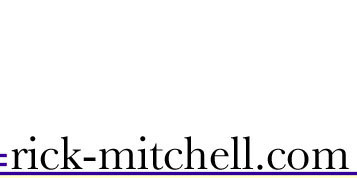French Agriculture Minister Calls for Trimming EU Milk Quotas
By Rick Mitchell
PARIS--Spurred by dairy farmers' five weeks of protests against sagging prices, French Agriculture Minister Hervé Gaymard called in February for a reduction in European Union milk quotas as a way to prop up the market.
"It seems to me that given today's declining trends in consumption and difficulties for exports, that it is necessary to consider using milk quotas as an instrument to manage supply," Gaymard said in Brussels before a February 25 meeting of the European Council of Agriculture Ministers.
France is Europe's second largest milk producer, at about 23 billion liters annually, behind Germany's 26 billion, according to the French national inter-professional center for the milk economy (CNIEL). Gaymard said that, since all milk-producing countries in the EU are affected by declining prices, "We must manage the milk supply at the EU level." EU production outstrips market needs by about 2%, according to the French milk producers' association (FNPL).
In France, the milk sector's crisis was exacerbated by stalled negotiations over prices for the current half-year, between the FNPL and the associations representing processors--the FNIL and FNCL. Processors said that during 2003 their competitors in Germany, the Netherlands and Belgium had already cut prices in response to falling demand, to some 10 euros per 1,000 liters below the average price in France. They argued that reform of Community Agriculture Policy (CAP) was bringing down dairy product prices.
Producers countered that they already sell at a loss. The prices that milk processors -- making cheese, yogurt and other dairy products -- pay to producers in France fell to about 293 euros per 1,000 liters in 2003, from about 308 euros in 2001. In February, the French government announced 20 million euros in emergency aid to dairy farmers.
On March 2, the two sides finally signed an agreement that retroactively cut 10.7 euros from the price per 1,000 liters in January, and another 9.5 euros in February and March. For April-June, prices will be set according to a 1997 agreement pegging prices to economic conditions, to such costs as feed and fertilizer, and actual retail sales of dairy products. The 1997 agreement had expired under new CAP laws, triggering the pricing crisis. Under the new accord, the two sides will immediately begin negotiating prices for 2004's second half.
Dairy farmers in the French farmers' federation (Confédération Paysan) promptly denounced the agreement and the FNPL for signing it. Dozens of federation members briefly occupied the Paris offices of the Maison du Lait, which groups the main French milk organizations, including the FNPL and CNIEL.
The federation demanded -- and apparently will get -- a seat at the table for the next round of negotiations. It also wants a 3% cut in EU quotas. However, Gaymard, the French agriculture minister, is asking for only a 1% cut, which he says will generate savings on the intervention budget (i.e., the EU's dairy-market support of about 350 million euros annually) and firm up prices to producers.
Analysts attribute the pressure on milk prices to several factors: retail sales are down, and the weak U.S. dollar has hurt exports. The collapse of Parlamat, one of Europe's biggest milk buyers, also hurt prices, at least temporarily. A possible increase of Russian import duties on cheese and butter and the accession to the EU of 10 new member states on May 1, as well as a planned cut in intervention prices in July, are also pushing prices down.
European Agriculture Commissioner Franz Fischler maintains that the EU milk market will stabilize after EU enlargement and the intervention price cuts.
Just as agriculture subsidies are one of world trade's thorniest negotiating issues, EU milk quotas are a complex, divisive subject. The European Council of agriculture ministers implemented them on April 2, 1984, to rein in excess production and reduce expenditures for disposal of surplus milk.
Under the system, a company's milk deliveries or sales above its quota can incur a penalty, the so-called "superlevy," the proceeds of which go to offsetting the cost of storage and disposal of surplus milk. The superlevy, due only when a member state exceeds its overall yearly quota, is calculated on the basis of 115% of the target price for milk. Since 1992, upon the first major CAP reform, quotas have been steadily increased.
During the Council meeting in February, the French delegation, in addition to quota reduction, asked for a simplification of the export refund system, with fewer constraints for exporters. France, Belgium, Germany, Ireland, Luxembourg and Austria, and the Netherlands asked for a dairy market analysis by the Commission. The Danish and UK delegations resisted the idea of a cut in national quotas, stressing the need for a competitive market. They said that compensation to milk producers had been provided by the June 2003 CAP reform, following the price cut on butter and skimmed milk powder.
The UK favors abolishing milk quotas altogether, calling them expensive and bureaucratic and an unfair hindrance to efficient farmers, benefiting countries that received higher allocations at the program's outset.

